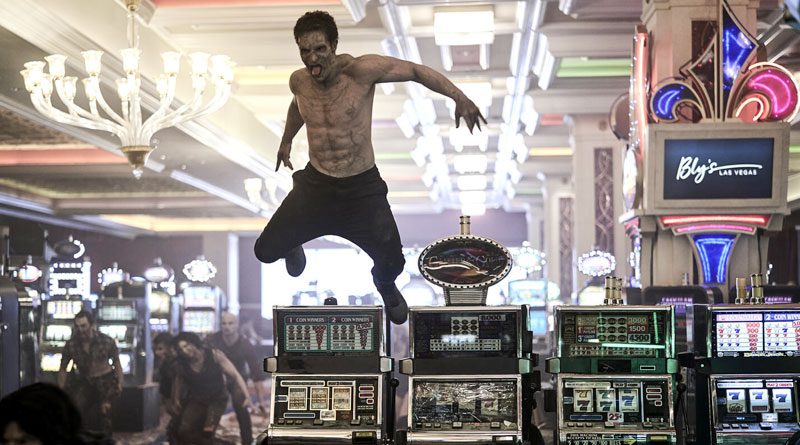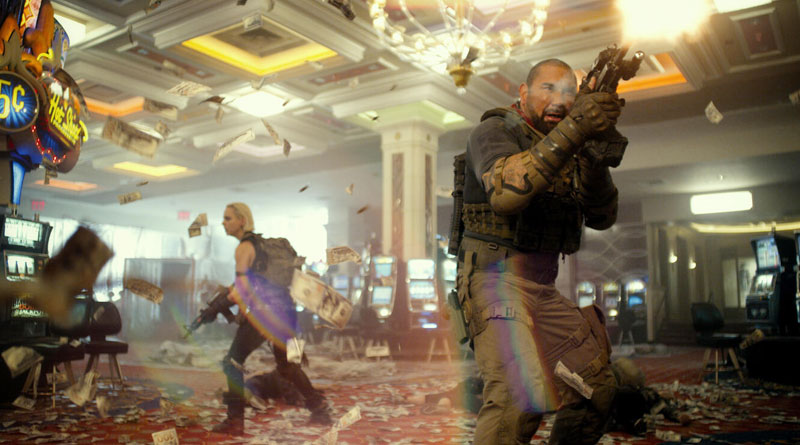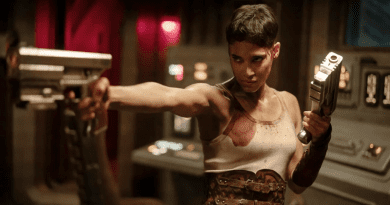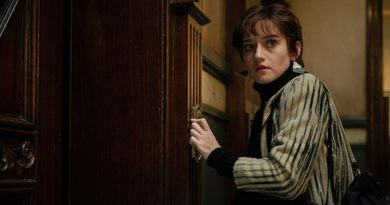Army of the Dead (2021) Review
Finally, it’s nice to see Zack Snyder tries something different for a change. Something that has nothing to do with the superhero genre, as evidently seen in Snyder’s filmography over the last decade ranging from the likes of Watchmen (2009) to Man of Steel (2013) and his recent director’s cut of Justice League.
In his latest film, Snyder chose to go back to his earlier roots — the zombie genre, where he made his directorial debut in the gritty Dawn of the Dead remake back in 2004. Army of the Dead, which also marks Snyder’s first directorial effort made for the streaming service (Netflix), is blessed with a fascinating hook: a zombie film with heist-movie tropes.
The film follows former mercenary Scott Ward (Dave Bautista), who used to save the U.S. Secretary of Defense during the zombie outbreak. He has since made his living flipping burgers until one day, he is approached by a casino boss (Hiroyuki Sanada’s Bly Tanaka) to pull off a heist worth US$200 million in exchange for a cool US$50 million fee. He gets to choose his own crew as well — among them include mechanic Maria Cruz (Ana De La Reguera), sharpshooter Mikey Guzman (Raúl Castillo) and safecracking expert Dieter (Matthias Schweighöfer). Together, they have to infiltrate the walled city of the zombie-infested Las Vegas and recover the money stored in Tanaka’s vault of his casino.
Army of the Dead gets off to a promising start with a pre-credits sequence on a desert highway involving a U.S. military convoy transporting a top-secret payload. There’s even an opening-credits montage scene later on that instantly reminds me of Snyder’s own Watchmen — all shot in a stylish music-video style set to Richard Cheese and Allison Crowe’s cover of Elvis Presley’s “Viva Las Vegas” instead of Bob Dylan’s “The Times They Are a-Changin” from the aforementioned 2009 film.

Then comes the film’s biggest problem — the whopping 148-minute running time that feels too long for its own good. It’s not like Snyder, who also co-wrote the screenplay along with Shay Hatten and Joby Harold have anything fresh and interesting to tell to justify such a length. As much as I like the novelty idea that blends the zombie genre and heist film, everything here feels superficial and yes, even generic as well.
Sure, there are some noteworthy moments such as the appearance of a zombie tiger (now, that’s something you don’t get to see every day in a zombie film) and a Silent Hill-like scene where Ward and his team have to sneak past the hibernating zombies as quietly as possible in the dark building. But such moments are few and far between.
The so-called heist itself lacks the necessary high-stakes scenario seen in the likes of Ocean’s Eleven. There are little senses of complication or elaborate scheme within the heist, making the whole thing as if it was a stroll in the park. Or just as Tanaka said earlier in the film, “Easy peasy lemon squeezy”. Of course, I didn’t expect the heist scene would be as literal as the dialogue spoken in the film.
The characters, in the meantime, is a mixed bag. Dave Bautista gives a better-than-expected performance as the team leader Scott Ward while Matthias Schweighöfer brings a decent comic-relief role as the timid safecracker, Dieter. Equally worth mentioning in the ensemble cast includes Tig Notaro’s sardonic supporting turn as the helicopter pilot, Marianne Peters and Nora Arnezeder’s no-nonsense portrayal as Lily, who knows the way around the Las Vegas city.

However, some other characters, namely Raúl Castillo is largely relegated to a background role as the sharpshooter Mikey Guzman. And although I’m okay with Ella Purnell’s performance as Ward’s stubborn and estranged daughter, Snyder’s attempt to bring in some emotional father-and-daughter arc into the otherwise gory zombie film feels perfunctory.
Technically speaking, Snyder’s odd but unique creative choice of shooting the film on a digital camera with a rehoused lens took me some time to get used to it. This is particularly evident with the film’s visual aesthetics that look distinctively blurry in the background shots. Speaking of background, the CG-heavy ruined city of Las Vegas is visually impressive while I’m glad that Snyder sticking to mostly practical effects for the zombie make-ups. The action, though repetitive in some scenes, is mindlessly entertaining with enough blood and gore. Also worth noting here: Snyder doesn’t go overboard with his signature slow-motion and speed ramping.
Overall, Snyder’s Army of the Dead could have been a worthy successor to his Dawn of the Dead remake. If only he trims off all the excess fats that bogged down most of the film’s lengthy runtime and made it as lean as his 2004 directorial debut.
Netflix has already betting big for Army of the Dead to turn into a potentially successful franchise, with the Matthias Schweighöfer-directed feature-length prequel titled Army of Thieves and another prequel in the form of a spinoff anime series called Army of the Dead: Lost Vegas. The film itself even ended with an obvious hint of a sequel, which may or may not happen at the time of writing. Frankly, I’m not sure about the whole franchise-focused approach that built around Army of the Dead, especially given the first film’s half-baked result from what I saw here.
Army of the Dead is currently streaming on Netflix.





